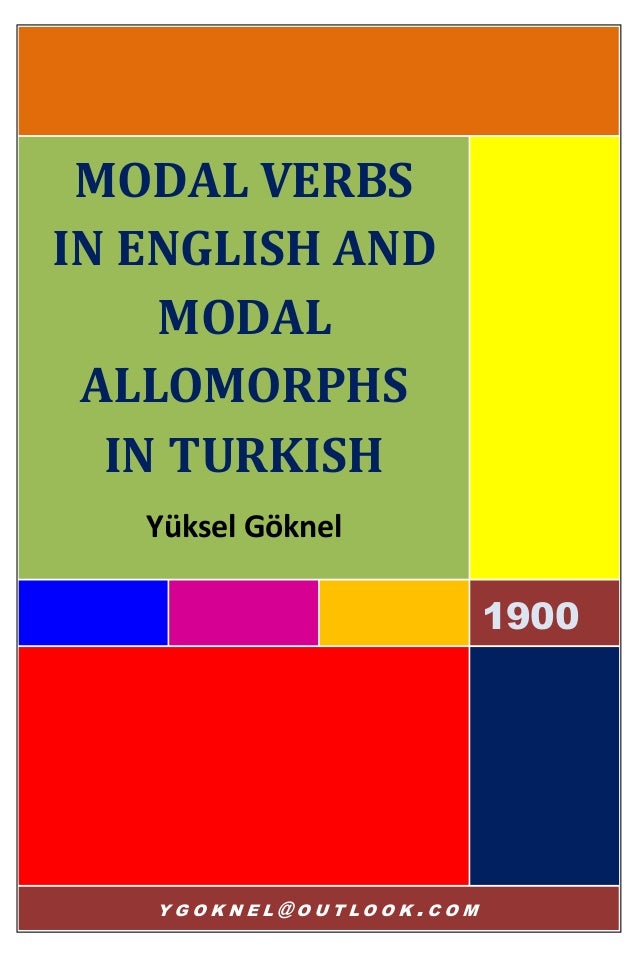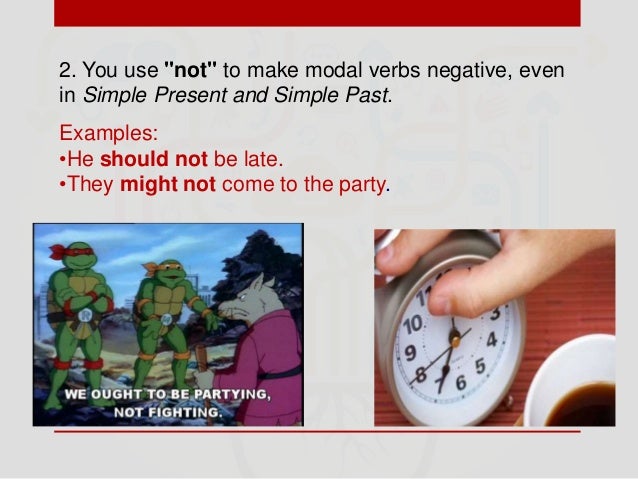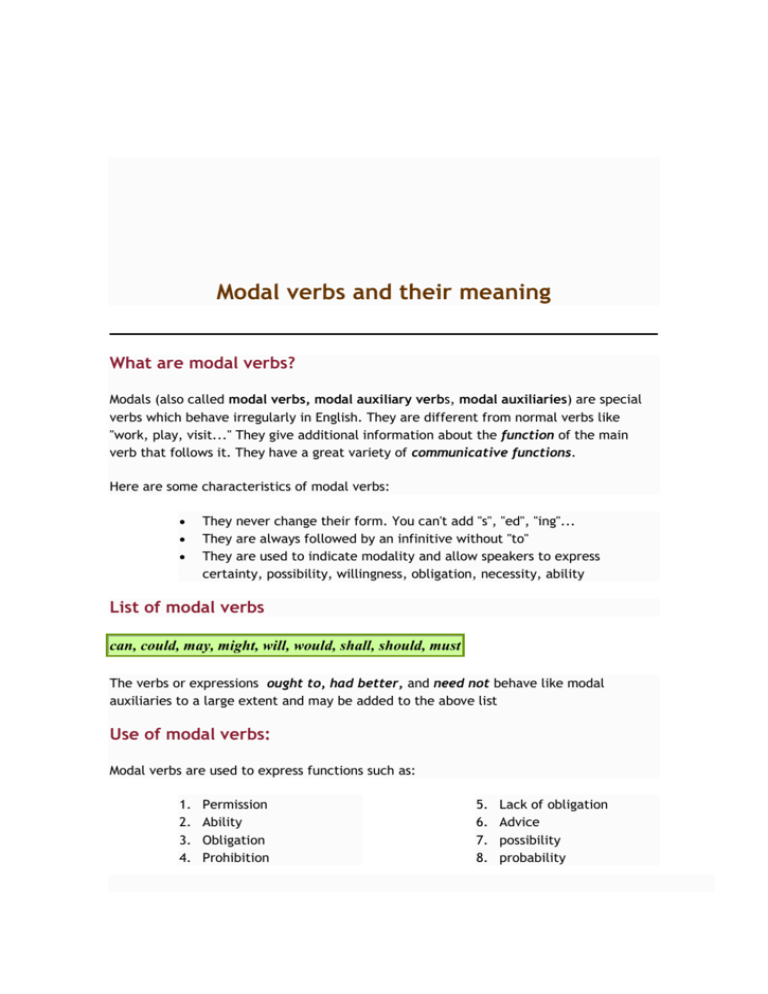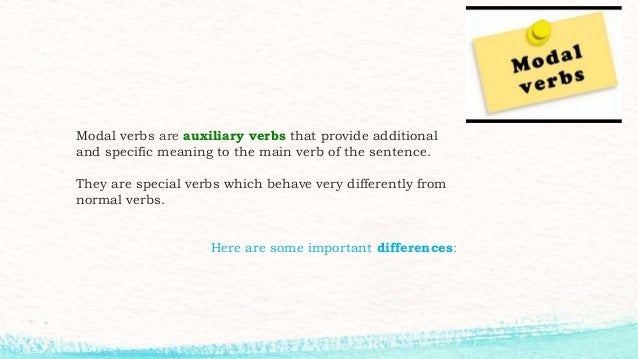The LAC and Han period data presented here support Abraham and Leiss' hypothesis regarding a close relation between the categories aspect and modality in the languages of the world. This is particularly evident for the root modal auxiliary verbs in Han Chinese. The system of modal auxiliary verbs expressing root modal meanings is still extremely confined during this period, and its complexity only increases during the EMC period. Identical to a number of other changes in the syntax of Chinese, this development coincides with the final loss of any transparency of the former morphology in the Chinese language. Thus, the development of the modal system in Chinese may have similar sources as the one in the Germanic languages. Although 必 bì seems to be the only direct marker of strict deontic modality in LAC and Han Chinese, the function as an epistemic modal adverb expressing future certainty is evidently its predominant function from the earliest instances on.
This function of 必 bì can be accounted for by what Coates labels 'pure logical necessity', expressing confidence in a logical necessity on the side of the speaker. To obtain a deontic reading of 必 bì, a causative/agentive subject is a necessary condition. This is evidenced by the contrastive examples in 22a and 22b, which contain the verb 立 lì 'set up, establish', a default [+TELIC] verb.
In example 22a with a non-overt causative/agentive addressee subject, 必 bì has a deontic reading, conveying a direct obligation to the addressee. In 22b with a theme subject, it is epistemic referring to the speaker's commitment to a future necessity. Although a passive reading of the complement is quite natural with the root modal auxiliaries 可以 kě(yǐ) and 當 dāng, this is not the case with deontic 必 bì which requires an agent or a causer subject for a deontic reading. With regard to the temporal structure of the complement, two different groups of root modal auxiliary verbs can be distinguished. The first group, represented by the modals NEG kě(yǐ) NEG and 當 dāng, allows both the process part E1 leading up to a change of state point tm and the resultant state part E2 in their temporal structure. In its epistemic reading, 必 bì is not confined to this temporal structure, and the temporal part E2, the state part, can also be included in the complement of 必 bì; this is another distinctive feature of the two modal readings.
As an epistemic adverb, 必 bì can to a certain extent be compared to the other epistemic markers of Han period Chinese. These—together with some other adverbs expressing factivity and other modal values—appear very high in the hierarchy of adjuncts and they take an entire proposition as their complement (Meisterernst 2016a; Wei 魏培 泉 1999). Evidently, epistemic adverbs are not subject to the same constraints with regard to the lexical aspect of their complement as modal auxiliary verbs; they operate on a different syntactic level.
Accordingly, they do not provide any counter-evidence to the hypothesis proposed by Abraham and Leiss . All modal auxiliary verbs are followed by a main verb in its base form ; they can never be followed by other modal verbs, lone auxiliary verbs, or nouns. Example 24 with the verb of cognition 思 sī 'think, think of, long for' is more ambiguous than the preceding examples. State verbs such as 思 sī can licence an event argument and can thus appear in root modal predications; accordingly, the lexical aspect of 思 sī does not necessarily argue against a deontic reading. The semantics of the verb and the experiencer subject provide some evidence in support of the epistemic analysis, since—contrastingly to kě(yǐ) and 當 dāng—deontic 必 bì by default has an agent or a causer subject. In any event, the modal predicate is future-projecting.
Ambiguous cases like these probably caused the replacement of 必 bì as a modal verb in EMC. Modal verbs are useful devices to evince the authors' stance concerning the propositional content (Biber et al., 1999; Palmer, 2001; Collins, 2009); therefore, these verbs can report on perspectivisation in introductions and conclusions. In this context, we expect that probability modal verbs entailing tentativeness will occur more frequently in introductions and necessity modals should appear more frequently in conclusions.
Research on the use of modal verbs in these two sections of the research article has been conducted using corpus tools for text retrieval and analysis. Variation ratios will be evaluated using a log-likelihood test to determine the significance of variation according to whether specific modal meanings appear in the introductions or the conclusions. Our main research questions are 'How does the use of modal verbs vary in the introduction and conclusion sections of scientific tourism research articles in terms of form and meaning? ' and 'How does the use of modal verbs vary in the introduction and conclusion sections of scientific tourism research articles in terms of the functions they fulfil? To summarize all this, we could say that "must" as a preterite occurs, not in completely independent sentences, but in sentences with given situations, i.e. usually in clauses subordinate not only in form but in sense. In many cases it is almost impossible to determine in which sense the writer or speaker has used the expression.
This may explain to a certain extent the differences of opinion among grammarians as to this or that particular example. This paper aims to investigate the distribution of semantic meanings and values of modal verbs in Chinese civil-commercial legislation and its English versions. The corpus tools, word2vector, AntConc 3.5.7 and SPSS 19.0, were employed for data filtering and analysis.
Results of the study show that deontic modal verbs indicating obligation, permission and prohibition are the most frequently used type of modal verbs and the values of Chinese modal verbs and English modal verbs are significantly different. Moreover, the frequency of modal verbs in both corpora reflects the divergence of context culture between Chinese and English. Additionally, the choice of modal verbs in two corpora demonstrates the negotiability, compromise and humanity of Chinese civil-commercial legislation, which conforms to its interpersonal function. Deontic 必 bì only allows for an agent or causer subject.Footnote 60 Accordingly, there is a strong relation between the thematic role of the subject and the temporal structure of the complement of the modal. Syntactically, the modal auxiliary verbs discussed here appear below both epistemic adverbs and negation. As has been pointed out in Hacquard , circumstantial modals are supposed to be located below aspect, but true deontics are located above aspect.
Whether this constraint also accounts for the LAC and Han period Chinese modals requires further research. Since verbs such as 可(以) kě(yǐ) can obtain both functions, their syntactic analysis provides a cue for the precise localization of deontic and circumstantial modals. According to the scope factors with regard to negation, 可(以) kě(yǐ) obviously occupies different syntactic positions as a deontic and a circumstantial modal. The epistemic adverbs are evidently generated in CP.
Accordingly, they are less confined in the selectional restrictions with regard to their complement. Research has been conducted using corpus tools to obtain evidence from our sub-corpus of introductions and conclusions, as mentioned earlier. Direct visual inspection of the texts has also been vital to identify the meaning of the modal verbs in context. The fundamental role of the context in specifying the sense a particular modal verb entails has been mentioned in the literature (see Huschová, 2015; Alonso-Almeida, 2015a and the references therein).
A modal verb may indicate an array of meanings, and therefore without these contextual cues, it would be unreasonable to expect an accurate categorisation of these verbal forms. The plasticity of modal verbs makes them unique; however, it also challenges our ability to identify the meanings they involve each time. In addition to these senses of modal verbs, there is another aspect that cannot be achieved through an automatic interrogation of a computerised corpora, and this is the function these verbs fulfil in the texts in which they appear.
Whethermodals,modal verbs,modal auxiliariesormodal auxiliary verbs, they are all the same. The modal verbs and the primary verbs are called auxiliary verbs. The difference between these two groups of verbs is that we can use modal verbs as auxiliary verbs only. In other words, we cannot use modal verbs on their own in a sentence, as they are not complete by themselves. We have to use them with other verbs, which must be in the simple present tense.
Modal auxiliary verbs are used to uniquely shift the meaning of the main verb they modify, expressing things such as possibility, likelihood, ability, permission, obligation, or intention. As we will see, how and when we use modal verbs greatly affects the meaning of our writing and speech. As a modal auxiliary verb, will is particularly versatile, having several different functions and meanings. It is used to form future tenses, to express willingness or ability, to make requests or offers, to complete conditional sentences, to express likelihood in the immediate present, or to issue commands. Modals/ modal verbs/ modal auxiliary verbs are a special type of verbs present in English grammar. These verbs are used irregularly in English grammar.
Uses of modal verbs in English grammar includes providing extra information about the action of the main verb. Finally, deontic modals appear to match exactly the goals of the introduction, namely a programmatic function, and those of the conclusion sections, namely a recapitulation function. In the case of the former, deontic modals represent meanings concerning promises of action in the paper and the expression of expectation arising from the revision of earlier literature on the topic. Along with dynamic modality, the pragmatic function of deontic modality seems to be the indication of authority, and therefore this type of modality may have a persuasive effect on readers.
Modal auxiliary verbs are used to show a necessity, capability, willingness, or possibility. Unlike most verbs, there is only one form of these verbs. Typically, verb forms change to indicate whether the sentence's structure is singular or plural. Most verbs also indicate whether something happened in the past, present, or future. This is not the case with most modal auxiliary verbs, which makes them simpler to understand and use correctly. Etc. are not possible because lexical or main verbs are negated with the do operator in the simple present and past tenses and must and should are central modal auxiliary verbs.
Modal verbs or modal auxiliary verbs are a type of verbs that indicates modality, i.e., likelihood, permission, ability and obligation. Some of the common modal verbs are can, could, may, might and must. I share Coates's view that it is not felicitous to use the label of 'deontic necessity' to identify a meaning type.
While sentences with modals differ in terms of their illocutionary force, the type of speech act in itself does not seem sufficient to posit a separate category of modal meaning. Modal verbs are so common that most English speakers don't even know what the grammatical name for them is. Note that modal auxiliary verbs are a type of auxiliary verb.
Auxiliary verbs encompass tenses, aspects, modality , voice, emphasis and so on. There are many other category of verbs in English like phrasal verbs. In this ESL skills course you can learn natural English phrases. Learn even more about English grammar in this introduction to grammar course.
The epistemic adverbs of Han period Chinese differ semantically from epistemic modal auxiliary verbs such as 'might' in 'It might be true' in English. Instead of conveying the commitment of the speaker to the truth of the utterance (in non-future contexts), they express different grades of confidence on the side of the speaker in different temporal contexts. The second group is only represented by the modal auxiliary verb 必 bì. This modal includes only E1 and the change of state point tm; it excludes the resultant state part E2 from its temporal structure.
It expresses true deontic values, but according to its reading in combination with the negative marker 不 bù, it rather belongs to the category of anankastic modals. In the examples in 27, nothing argues against a deontic interpretation on a par with example 23b with a first person agentive subject. Time span adverbials as in example 27a do not provide an argument against a deontic interpretation, since they combine with events identical to deontic modal auxiliary verbs. The most important exceptions often concern the negative uses. For example, in German the translation of needn't / don't have to, expressing the lack of obligation either way, would be must not and that causes confusion.
To translate the English sense ofmust not meaning prohibition, German uses a different modal auxiliary verb , roughly translatable as may not. A single verb form serves in Polish for the English verbs must, need to and ought to, for example. The central modal auxiliary verbs must and ought have no tense forms at all and could as the past of can or might as the past of may are restricted to certain meanings . In the following section, the different modal auxiliary verbs conveying the root/deontic modal value of obligation and necessity are discussed with particular regard to the temporal and aspectual structure of the complement they select. In Section 2, the theoretical background and the diachronic development of aspectual and modal features in Chinese will be discussed. In Section 3, the proposed hypothesis will be checked against the root modal verbs of Late Archaic and Han period Chinese; in Section 4, the conclusions drawn from the discussion will be presented.
These auxiliaries express obligation, possibilities, permission or ability in a sentence by adding meaning to the main verb. As per modal verbs rules, the spelling or form do not change, unlike other verbs. The modal auxiliary verb would has a variety of functions and uses.
It is used in place of will for things that happened or began in the past, and, like shall, it is sometimes used in place of will to create more formal or polite sentences. It is also used to express requests and preferences, to describe hypothetical situations, and to politely offer or ask for advice or an opinion. Modal verbs, which may express such notions as possibility ("may," "might," "can," "could") or necessity ("must"). As shown in Figure 4, dynamic modality is the most common modal device in the texts in both the introductions and the conclusions. In the case of the latter, the number of dynamic modals exceeds the number of other modal meanings in the conclusions and introductions.
What Are The 9 Modal Verbs Epistemic modals appear in the second position, with more cases registered in conclusions. The use of deontic modality is very common in the conclusion sections, with only a few more cases than the epistemic devices. In the introductions, deontic modality is not a recurrent element. We shall comment on each modal type in the order of frequency. In this description, we use statistics based on the LL calculation of variation. The LL ratio works quite well for evaluating variation in small textual compilations, as in the case of our corpus of introductions and conclusions of research papers.
The present study examines modal verb meanings and variation in these verbs in a corpus of texts in the field of tourism. We use a compilation of article introductions and conclusions written in English and published in leading journals specialised in tourism studies. Modal verbs are important to evince the authors' stance concerning the propositional content (Biber, Johansson, Leech, Conrad & Finegan, 1999; Palmer, 2001). Variation ratios will be evaluated using a log-likelihood test to determine differences in significance between occurrences in introductions and conclusions.
Our conclusions will report, therefore, on the forms, meanings and functions of modal verbs in the sections analysed. In English, modal verbsare a small class of auxiliary verbs used to express ability, permission, obligation, prohibition, probability, possibility, advice. In English, the modal verbs are used to express ability, possibility, permission or obligation. Each one of the modal verbs can be used to express one or more of these modalities. They can also be used to form the future tense in English and to make conditional sentences.
On one hand, whenever a participant used the future tense or modal auxiliary verbs to describe the use of a particular concept (e.g., would), then a prediction happened (cf. Gotti, 2006;Kakzhanova, 2013). This is due to the fact that it is used to talk about the future in the past and to express the conditional mood. In all these cases, the modal verbs 'can', 'must' and 'should' report on the desirability of the actions described in the propositional contents of the statements in which these verbs appear. The idea of improvement, as in above, remains strong in the use of these modal verbs in all these examples.
These verbs indicate that it is essential for local tourism representatives of agents to take some actions to boost economic areas of tourist interest, which means that P done by A 'is better than' ¬P by A. It seems clear, therefore, that the pragmatic motivation of deontic modals results from a desire to suggest authority as this notion is strongly connected with credibility in science. A small group of auxiliary verbs, called the modal verbs are only used in combination with ordinary verbs. A modal verb changes the other verb's meaning to something different from simple fact. Modals may express permission, ability, prediction, possibility, or necessity. Language tutors understand that modal verbs often pose challenges for learners of English due to their many functions, meanings and grammatical rules.
This first chapter therefore discusses the basics of modal verbs, with our second, third and fourth chapters on this topic exploring the importance and challenges of this word type, offering relevant instruction on grammar, types and uses. Once you've completed this short reader, you may wish to then unlock our beginner, intermediate and advanced worksheets to check your ability and understanding. The English modal verbs are a subset of the English auxiliary verbs used mostly to express modality (properties such as possibility, obligation, etc.). They can be distinguished from other verbs by their defectiveness and by their neutralization (that they do not take the ending -s in the third-person singular). Does not necessarily carry the sense of present relevance and may just be reference to a finished event which has no present relevance.



























